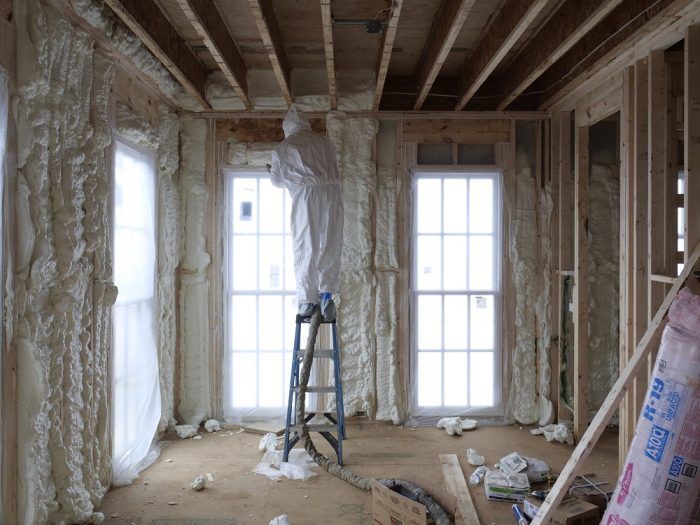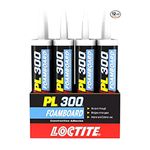Getting Spray Foam Right
Spray polyurethane foam is an incredible material when applied correctly—but in the wrong hands it can make a big mess.

Spray foam insulation scares homeowners more than it should — although this is hardly surprising given the horror stories that abound on the Internet. While some of these stories are legitimate, more are based on skewed perceptions or flawed science. The truth is that spray foam is an incredibly effective insulation material and that failures are incredibly rare.
Spray foam also scares contractors less than it should. When we first started using spray foam in 1995 we were captivated by its ability to stop convective as well as conductive heat loss, its versatility, and its ease of installation (among other things). It almost seemed magical, certainly compared to alternatives like fiberglass and cellulose.
While some of the magic has worn off over the past twenty years, many in our industry continue to take quality installation for granted. The truth is that spray foam is a highly sophisticated, occasionally finicky material that’s manufactured from the back of a truck on a construction site in conditions that are hard to control by people who are probably not paid nearly what they deserve. If you get it all right, you have a great insulation system in place. If you get something wrong, you can find yourself with a real mess on your hands. We’ve learned that the hard way, which is why we no longer take safe and effective installations for granted.
Twenty years of experience coupled with Henri’s expert guidance has taught us that there are six steps to getting spray foam right:
1. Select the right installer. We work with installers whose client service ethic, concern for safety, and commitment to quality match ours. This makes all the other steps much easier.
2. Select the right product(s). “Spray foam” is a single term used to describe a broad range of materials that vary in cost, insulating value, and moisture management ability, among other things. Manufacturers also continue to develop new formulations and product characteristics every year. We tend to shy away from new products (we’ll let others be the guinea pigs when we can), and, working with Henri, we base our product choices on the optimum balance of cost, effectiveness, and environmental impact.
3. Prepare the job site. This is our responsibility. We need to make it as easy as possible for the foam crew to access the work area and install the foam correctly and effectively. Often this requires us to remove some existing insulation. We also need to make sure that the site is safe for everyone, during installation as well as during the curing period (which typically lasts 24 hours). We set up ventilation for the duration of installation and curing; we require workers to wear personal protective equipment while in the spray zone; and we ask our clients to vacate their house until curing is complete.
4. Spray the foam on-ratio. Pretty much all spray foams are manufactured on site by mixing together and heating two liquid components (part A and part B) to cause a chemical reaction of which spray foam is the result. Most air quality problems homeowners have with spray foam installations are a result of an imbalanced mixture that impedes the chemical reaction. Training and field experience go a long way towards helping ensure that the mixture is on ratio.
But Henri has taken it a step further by developing a way to test the ratio. The first time we hired Henri to commission a job, he found that the mixture was off-ratio and spent several hours troubleshooting with the installer to correct the problem. While the installer knew the mixture was off, the ratio test proved invaluable in helping correct the problem in the mixing tank, before any foam had been applied. As a result the job was delayed by about half a day — a mild nuisance compared to tearing out uncured foam.
5. Spray the foam at the proper temperature. Each manufacturer specifies a temperature range for installation, both for the materials and for the surfaces they are applied to. When components or surfaces are too cold, serious performance degradation can result. As a commissioning agent, Henri makes sure the installer relies on the manufacturer’s instructions and uses measurement equipment — not instinct — to evaluate whether the conditions are right for the work.
6. Perform quality control testing on all installations. The best foam crew in the world will only get us 90% to 95% of the coverage that we’re looking for from a foam insulation job. This isn’t because spray foam crews are sloppy but because foam is hard to install evenly. Once the foam crew is done and the 24-hour waiting period is over, our own crew comes in with a blower door and infrared camera to test whether the installed product meets our expectations. More often than not, there are voids or gaps that we need to fill. We find them and fix them.
By following these six steps, we believe we can and do deliver safe and effective spray foam applications. Some of our clients nonetheless want to avoid spray foam at all costs. More often than not, we can find alternatives for these homeowners; these alternatives are usually more labor-intensive and expensive than spray foam (otherwise we would have suggested them to begin with), but we find ways to make them work.
Manufacturers and installers tend to view spray foam primarily as a product to be sold — and it certainly is that. But for it to be safe and effective, it also needs to be viewed holistically, as one integral part of a system that’s designed to provide efficiency, comfort, and safety for our clients. With Henri Fennell’s expert help, that’s the key value we try to add to our spray foam projects.
Paul Eldrenkamp is the owner of Byggmeister Design Build. Rachel White is the company’s performance manager. This post originally appeared at the Byggmeister website and on GreenBuildingAdvisor.com.
Fine Homebuilding Recommended Products
Fine Homebuilding receives a commission for items purchased through links on this site, including Amazon Associates and other affiliate advertising programs.

Respirator Mask

Loctite Foamboard Adhesive

Utility Knife




